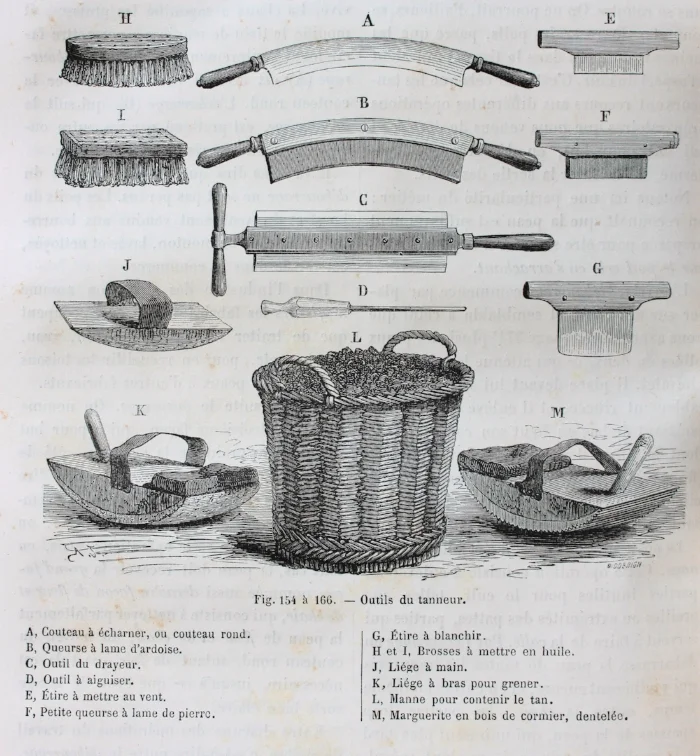
It does not hold up in strength and age to bark tanned leather. The leather is especially inferior in present day commercially tanned leather with chemicals.

Folks like Jim Croft- a medieval bookbinder I studied with last year in northern Idaho said that you can really see the change in leathers in old books- especially the really old ones. The quality of the process downgraded too. As the skill got transferred to more urban centers, the waters got polluted from the dumping of spent tannins (it takes a lot of water in general) and it stunk up the cities. Early leathers were made from deer in Europe, but eventually they were hunted out, and the leathers were switched over to domesticated animals. Eventually the government started to impose strict regulations on folks tanning, only allowing people who have gone through extensive training to legally tan hides, and could only do it in the urban areas. Tanneries on a small scale and in rural areas on family farms, where people did it seasonally, worked out well. These tanneries smelled, and the people who did it probably smelled all the time. They we're a lower 'class' usually, but made decent money in the trade, and often it was passed down generationally. There was a tannery tradition in rural Europe that was the job of a specific group of people. Most (95%) of commercial leathers are tanned with alum-todd or other chemicals to preserve and color the skin.Įven as soon as 75 years ago, many leathers were still bark-tanned. It is very hard to do on an industrial scale economically. That's a lot of people.īrain-tanning is another process I won't discuss here that requires a pretty different process, using animal brains, egg yolks or soap and oil to make buckskin or 'shammy' as my dad likes to call it.Īnother name for bark-tanned leather is 'vegetable tan' which you might see commercially sold but it is still not actually naturally tanned. This process has taken place all over the world and has been done by most people who have ever hunted and eaten animals, as long as humans have eaten animals. Sometimes, it was in combination with urine, or some fats from whatever animals we're abundant in the region (this could be fish, or bear).
ACORN TANNIN FOR TANNING HIDES SKIN
What do I mean by bark tanning? We'll, all leather used to be made by soaking a skin in some form of tannin solution. After going through the process many times, I am convinced the whole thing has some alchemical elements. I love the intersection of plants with craft, and the idea that you can preserve an animal's skin seriously just with some tree bark or oak galls. Be aware that it can look, feel and smell (you can't smell it through the computer thankfully) gross.

I find it a spiritual process that engages the reality of the animal's death and my own inevitable mortality. This process is the 'ancient' natural one that doesn't use chemicals and is done with the upmost respect. Preserving animals' skins in some form for clothing, protection, shelter has been a part of being a human engaging the land for a long time. So this piece is on tanning animals skins, and I want to reiterate before you read further that my preference is using road kill skins in this process, animals that have been unfortunately harmed by cars. (tan oak acorns, one plant that can be used in bark tanning) C H E M I C A L // F R E E // T A N N I N G


 0 kommentar(er)
0 kommentar(er)
